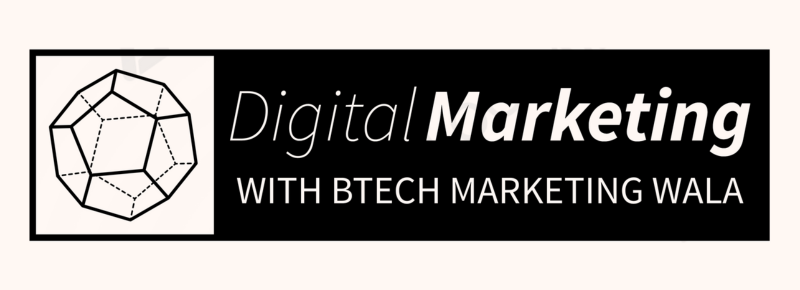
Table of Contents
Purchasing a Readymade Website can be a highly profitable investment if done right. Unlike traditional websites that need time, resources, and effort to develop from scratch, Readymade Websites offer you an immediate online presence, complete with traffic, SEO, and social media integration. However, just because a website is available for sale doesn’t automatically mean it’s profitable. Evaluating the profitability of a Readymade Website before purchase is crucial to ensuring that it aligns with your business goals and has the potential to generate the income you expect.
This guide will walk you through the steps to assess the profitability of a Readymade Website so you can make an informed decision before committing to a purchase. Whether you are looking to buy a blog, eCommerce store, or affiliate website, understanding the key indicators of profitability is essential.
Why Choose a Readymade Website?
Before diving into the factors that determine profitability, it’s important to understand the benefits of purchasing a Readymade Website. Unlike template-based websites, which require extensive customization, Readymade Websites from Btech Marketing Wala are fully functional and designed to generate traffic. These sites come with SEO built-in, established traffic, and social media channels already activated. Essentially, you’re not starting from scratch but acquiring an active, operational business.
Want to explore high-quality Readymade Websites? Check out Btech Marketing Wala’s collection: View All Readymade Websites.
Key Indicators of Profitability in a Readymade Website
When evaluating the profitability of a Readymade Website, several factors must be considered. These factors will help you understand the revenue potential, ongoing costs, and long-term sustainability of the website.
1. Revenue Streams
One of the first things to examine when evaluating a Readymade Website’s profitability is its revenue streams. Different websites generate income in different ways, depending on their business models. Common revenue models include:
- Affiliate Marketing: Websites that earn commissions by promoting products or services and driving sales through affiliate links.
- E-commerce Sales: Websites that sell physical or digital products directly to customers.
- Ad Revenue: Websites that generate income by displaying ads, such as Google AdSense or sponsored posts.
- Subscription or Memberships: Websites that charge users a recurring fee to access exclusive content or services.
Before making a purchase, ask the seller to provide detailed information about the current revenue model and how much income it generates on a monthly basis. Websites that have multiple revenue streams are often more profitable, as they are not reliant on just one source of income.
2. Traffic Analysis
Traffic is the lifeblood of any online business. Without visitors, even the best-designed website with the most attractive products or services won’t be profitable. When evaluating a Readymade Website, it’s important to assess its current traffic levels and understand the sources of that traffic.
Key traffic metrics to analyze include:
- Number of Visitors: How many unique visitors does the website receive on a monthly basis?
- Traffic Sources: Are visitors coming from organic search, social media, referral links, or paid advertising?
- Bounce Rate: What percentage of visitors leave the site without interacting with it?
- Engagement Metrics: How much time do visitors spend on the site? How many pages do they view per session?
Tools like Google Analytics can provide detailed insights into a website’s traffic performance. Ensure that the website has a steady flow of organic traffic, as this is typically the most sustainable and cost-effective source of visitors.
Tip: Websites offered by Btech Marketing Wala come with built-in SEO and existing traffic, making it easier for you to evaluate their profitability based on current traffic trends.
3. SEO and Search Engine Rankings
A website’s visibility in search engine results plays a significant role in its profitability. The higher a website ranks for relevant keywords, the more organic traffic it will attract, which often leads to higher conversion rates.
When evaluating a Readymade Website, take the following SEO factors into account:
- Keyword Rankings: What keywords does the website rank for, and how competitive are those keywords?
- On-Page SEO: Is the website optimized for search engines with appropriate meta titles, descriptions, and headers?
- Backlink Profile: Does the website have high-quality backlinks from reputable sources? A strong backlink profile can improve search engine rankings.
- Content Quality: Is the website’s content well-written, informative, and optimized for SEO? High-quality content not only improves SEO but also keeps visitors engaged.
A website that already ranks well for competitive keywords in your niche is a valuable asset. However, it’s important to verify that these rankings are sustainable and not dependent on short-term tactics that could result in penalties from search engines.
4. Monetization Potential
In addition to examining existing revenue streams, it’s important to assess the monetization potential of a Readymade Website. Ask yourself:
- Can you expand the current monetization methods? For example, can you add more affiliate products, sell advertising space, or introduce a subscription model?
- Is there room to scale the business? Can the website handle increased traffic and sales without significant additional costs?
- What is the customer acquisition cost? Is it affordable to drive more traffic to the site through paid advertising, or will you need to rely on organic traffic?
A profitable Readymade Website should have a clear path for scaling and increasing revenue over time. Ideally, it should have a proven business model that you can build upon.
5. Expenses and Operating Costs
While it’s tempting to focus solely on a website’s revenue, it’s equally important to consider the expenses associated with running the site. High operating costs can eat into profits, making the website less lucrative in the long run.
Common expenses to evaluate include:
- Hosting and Domain Costs: How much does it cost to host the website, and are there any premium domain fees?
- Software and Plugins: Are there recurring costs for website management tools, plugins, or other software?
- Content Creation: Will you need to hire writers, designers, or developers to create new content or update existing pages?
- Marketing and Advertising: How much does the website currently spend on paid ads, and is this expense sustainable?
When evaluating a Readymade Website’s profitability, subtract these expenses from the revenue to get a clear picture of the website’s net profit.
6. Customer Base and Audience Engagement
A profitable website not only attracts traffic but also retains a loyal customer base. When assessing a Readymade Website, look at how engaged the audience is and whether the site has a dedicated customer base.
Key factors to consider include:
- Repeat Visitors: How many visitors return to the website after their first visit?
- Email Subscribers: Does the website have a growing email list, and how engaged are the subscribers?
- Social Media Followers: Is the website’s social media following active and engaged?
- Customer Reviews and Testimonials: Positive reviews and testimonials can be a strong indicator of customer satisfaction and brand trust.
A website with a loyal audience is more likely to generate consistent revenue and have long-term profitability.
7. Historical Performance
When buying a Readymade Website, it’s essential to review its historical performance. This will give you a better understanding of the website’s growth potential and any challenges it may have faced.
Ask the seller to provide data on the following:
- Revenue History: What has the website’s revenue looked like over the past 6 to 12 months? Have there been any significant fluctuations?
- Traffic Trends: Has the website’s traffic grown, remained stable, or declined over time?
- Seasonal Variations: Does the website experience seasonal spikes or dips in traffic and revenue?
Reviewing historical data will help you assess the website’s stability and whether its current success is sustainable.
8. Technical Health and Website Performance
A well-performing website is crucial for profitability. If a website loads slowly or has technical issues, it can hurt both user experience and search engine rankings. When evaluating a Readymade Website, check its technical health:
- Page Load Speed: Slow-loading pages can lead to high bounce rates and lower conversions. Use tools like Google PageSpeed Insights to assess the site’s speed.
- Mobile Optimization: Ensure the website is responsive and works well on mobile devices. A large portion of online traffic comes from mobile users.
- Security Features: Does the website have SSL certificates and other security measures in place to protect user data?
- Functionality: Test the website’s forms, buttons, and e-commerce checkout processes to ensure everything is functioning correctly.
A website that performs well technically is more likely to retain visitors and convert them into paying customers.
Need instant support? Chat with us on WhatsApp! Click here: WhatsApp Support.
9. Social Media Integration
Social media is a powerful tool for driving traffic and generating brand awareness. A website with an active social media presence can leverage these platforms for additional traffic, engagement, and sales.
When evaluating the social media presence of a Readymade Website, consider the following:
- Follower Count: How many followers does the website have across its social media platforms?
- Engagement Rates: Are followers actively engaging with the content (likes, comments, shares)?
- Traffic from Social Media: How much of the website’s traffic comes from social media, and is this traffic converting into sales or leads?
Social media can be an excellent source of traffic for a website, especially if the website’s content or products resonate with the audience.
Additional Considerations When Buying a Readymade Website
While the factors discussed above are crucial for assessing the profitability of a Readymade Website, there are additional considerations you should keep in mind before making a purchase. Understanding these elements will further enhance your decision-making process and help you avoid potential pitfalls.
11. Due Diligence and Seller Verification
Before finalizing a purchase, it’s essential to conduct due diligence on the seller and the website itself. This step is crucial in ensuring that you are making a sound investment. Here are some key aspects to focus on:
- Seller Reputation: Research the seller’s background. Are they known for selling legitimate, high-quality websites? Look for reviews, testimonials, and any feedback from previous buyers. A reputable seller will have a track record of successful transactions and satisfied customers.
- Legal Ownership: Verify that the seller has legal ownership of the website and its assets. This includes the domain name, content, and any existing contracts or agreements. Request documentation that proves the seller’s ownership.
- Transparent Communication: A trustworthy seller should be willing to answer your questions openly and transparently. If a seller is evasive or unresponsive, it may be a red flag.
12. Website Documentation
Having proper documentation for a Readymade Website is essential for smooth operation and future growth. Before making a purchase, ensure that the seller provides the following:
- Site History: A record of the website’s performance over time, including traffic and revenue data. This information will help you understand the website’s trajectory and whether any issues may have contributed to fluctuations.
- Business Procedures: Documentation of any processes related to content creation, marketing, customer service, and operations. This information can be invaluable as you take over the management of the site.
- Access Credentials: Make sure you receive all necessary login credentials for the website, domain registrar, hosting account, social media accounts, and any third-party tools used for marketing or analytics.
13. Post-Purchase Support and Transition
Transitioning ownership of a Readymade Website can sometimes come with challenges. Therefore, it’s wise to negotiate post-purchase support with the seller. This may include:
- Training and Guidance: Request guidance on how to manage and operate the website effectively. This training can help you quickly get up to speed with any tools or systems the previous owner used.
- Technical Support: Inquire if the seller will provide technical support for a specific period after the purchase. This support can be invaluable if you encounter any issues as you take over the site.
- Customer Introduction: If applicable, ask the seller to introduce you to existing customers or clients. Building relationships with current users can help maintain customer loyalty and trust during the transition.
14. Testing the Website
Before finalizing your purchase, it’s crucial to test the website to ensure it operates as expected. A thorough examination can help you identify any potential problems that may affect profitability:
- Functionality Testing: Check that all features, forms, and functionalities work seamlessly. Test the checkout process (for e-commerce sites), subscription options, and any interactive elements.
- Performance Testing: Assess the website’s loading speed on different devices and browsers. Ensure it meets industry standards for performance.
- Content Review: Read through the existing content for quality and relevance. Ensure that it aligns with your business objectives and is engaging for your target audience.
15. Consider Your Own Goals and Expertise
Lastly, take the time to reflect on your personal business goals and expertise. Buying a Readymade Website should align with your overall strategy and vision for the future. Here are some questions to consider:
- Niche Alignment: Does the website fit within your area of expertise or interest? Having a personal connection to the niche can make it easier to manage and grow the website effectively.
- Long-Term Vision: How do you plan to grow the website in the future? Consider your long-term goals and whether the Readymade Website can accommodate them.
- Resource Availability: Assess whether you have the necessary resources—time, skills, and budget—to manage the website successfully. Investing in a Readymade Website is only worthwhile if you can actively support and grow it.
Conclusion: Making the Right Investment
Purchasing a Readymade Website can be a game-changer for new entrepreneurs looking to establish an online presence quickly. However, evaluating the profitability of the website before making a purchase is essential for ensuring that your investment yields positive results.
By examining revenue streams, traffic metrics, SEO performance, expenses, and growth potential, you’ll be better equipped to make an informed decision. Conducting due diligence on the seller, reviewing documentation, and assessing the website’s technical health can also help mitigate risks associated with buying an online business.
With the right approach and thorough evaluation, you can confidently choose a Readymade Website that aligns with your goals and sets you up for success in the digital marketplace.
Call to Action
Ready to take the plunge into online entrepreneurship? Explore our premium selection of Readymade Websites designed to help you succeed right from the start. Check out Btech Marketing Wala’s collection today: View All Readymade Websites.
Need instant support? Chat with us on WhatsApp! Click here: WhatsApp Support.





Leave Your Comment